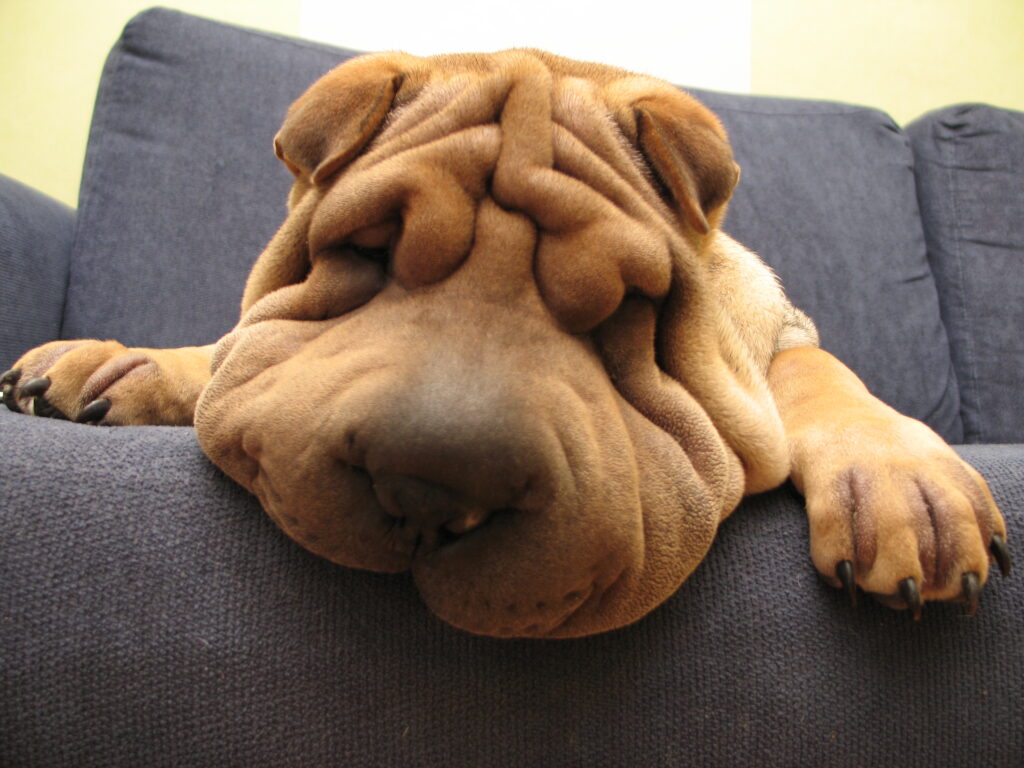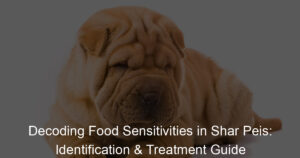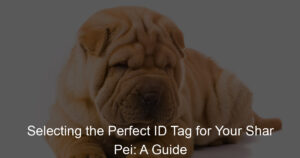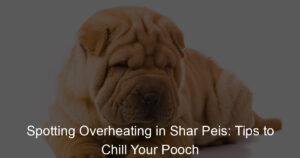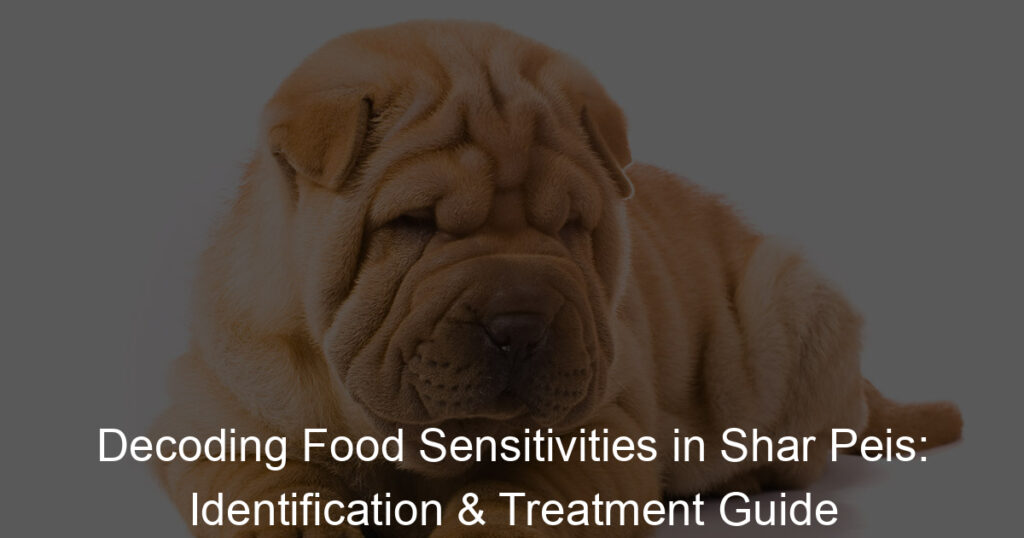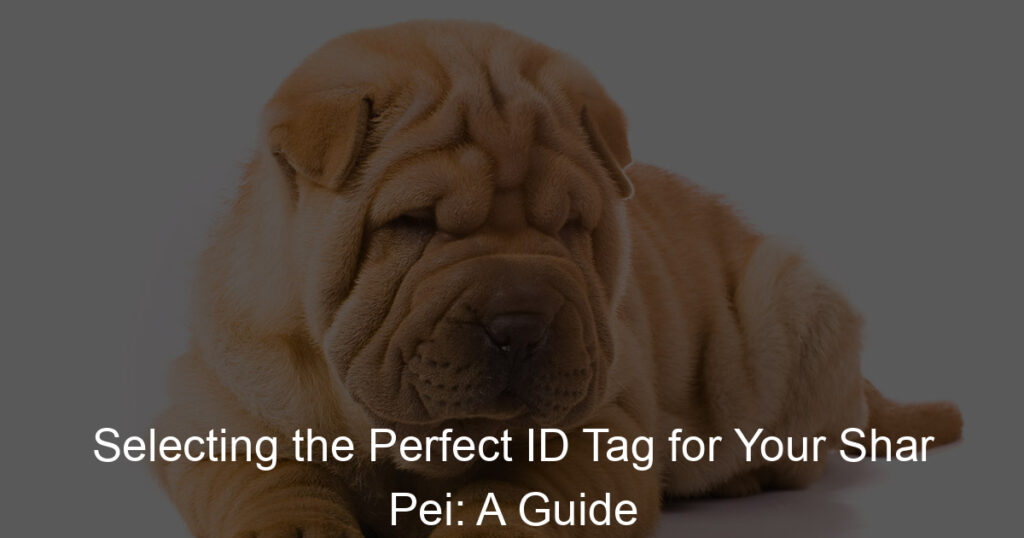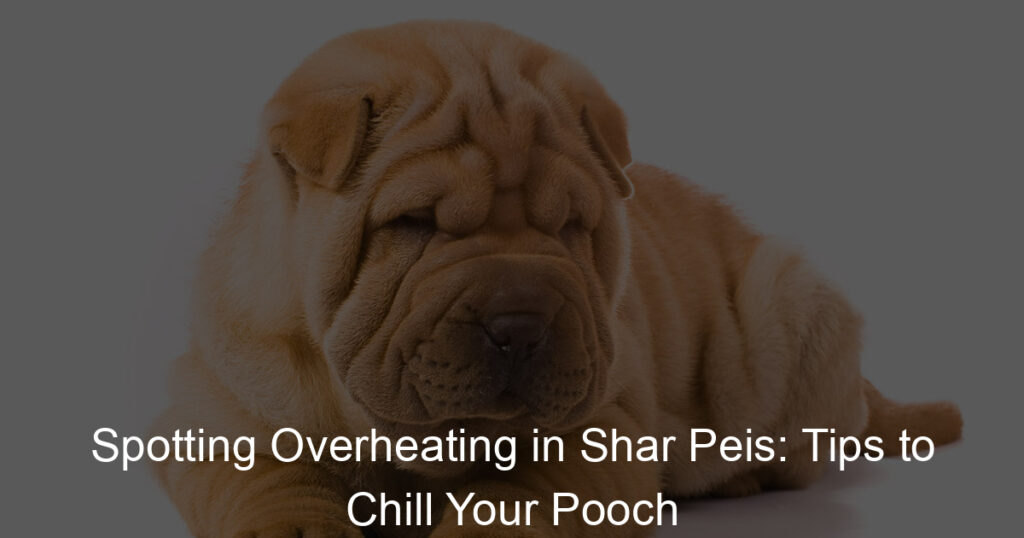Introduction to Shar Pei Breed Characteristics
If you’re a dog lover, you’ve probably come across the unique and adorable Shar Pei breed. These dogs are known for their distinctive features and lovable personalities. Let’s dive in and learn more about them!
- Overview of Shar Pei breed
- Key physical features of Shar Peis
- Common personality traits of Shar Peis
Understanding the Shar Pei breed can help potential owners provide the best care for these unique and lovable dogs. So whether you’re considering adding a Shar Pei to your family or just curious about this fascinating breed, there’s a lot to love about Shar Peis!
Understanding Brachycephalic Dog Breeds
Let’s dive into the world of brachycephalic dog breeds. These are special types of dogs with unique characteristics that make them stand out from the crowd. But what exactly are they? Let’s find out!
- Definition of brachycephalic breeds
- Common characteristics of brachycephalic dogs
- List of popular brachycephalic dog breeds
Understanding brachycephalic breeds is essential for any potential dog owner. These breeds require special care and attention due to their unique physical characteristics. So, if you’re thinking about bringing a brachycephalic dog into your home, make sure you’re ready to provide the care they need!
Are Shar Peis Brachycephalic?
Have you ever wondered about the unique facial structure of your Shar Pei? The term “brachycephalic” might sound like a mouthful, but it’s just a fancy way of describing dogs with a short nose and a flat face. Let’s dive deeper into the world of Shar Peis and explore whether they fall into this category.
- Exploring the Shar Pei’s skull structure
- Comparing Shar Peis to other brachycephalic breeds
Understanding your Shar Pei’s brachycephalic nature is crucial in providing them with the best care possible. In the following sections, we’ll delve into the health issues associated with brachycephaly and how you can help your Shar Pei lead a healthy, happy life.
Brachycephalic Syndrome in Shar Peis
Shar Peis, with their adorable wrinkled faces, are a breed that’s hard to resist. But did you know that these cute wrinkles can sometimes lead to a health condition known as brachycephalic syndrome? Let’s dive in and understand more about this condition.
- Understanding brachycephalic syndrome
- Common symptoms of brachycephalic syndrome in Shar Peis
- Case studies of Shar Peis with brachycephalic syndrome
It’s important to remember that not all Shar Peis will develop brachycephalic syndrome, and those that do can still lead happy, healthy lives with the right care and attention. If you notice any of the symptoms mentioned above in your Shar Pei, it’s always a good idea to consult with a vet.
Shar Pei Breathing Problems
Shar Peis, with their adorable wrinkled faces and loyal personalities, are a favorite among dog lovers. However, like many breeds, they are prone to certain health issues. One such issue is breathing problems. Let’s delve into this topic to understand more about these problems and how to manage them.
- Common breathing problems in Shar Peis
- How brachycephalic syndrome affects Shar Pei’s breathing
- Ways to manage breathing problems in Shar Peis
Remember, every dog is unique and may require different care. Always consult with your vet for the best advice on managing your Shar Pei’s health.
Care for Brachycephalic Dogs
Brachycephalic dogs, like Shar Peis, have a unique set of needs due to their distinctive physical characteristics. These dogs have a shorter snout and a flattened face, which can lead to certain health issues. However, with the right care and attention, they can lead a happy and healthy life. Let’s delve into the special care requirements for these dogs and how to ensure a good quality of life for them.
- Special care requirements for brachycephalic dogs
- Regular Vet Check-ups: Regular vet visits are crucial to monitor their health and detect any potential issues early. This includes regular eye and ear checks as these areas can be prone to infections.
- Weight Management: These dogs can easily become overweight, which can exacerbate their breathing problems. A balanced diet and regular exercise are essential.
- Temperature Control: Brachycephalic dogs can struggle with heat regulation due to their short snouts. It’s important to keep them cool during hot weather and avoid strenuous exercise.
- Proper Grooming: Regular grooming is essential to keep their skin folds clean and prevent infections.
- How to ensure a good quality of life for brachycephalic dogs
- Provide Mental Stimulation: Like all dogs, brachycephalic breeds need mental stimulation. This can be achieved through toys, training, and social interaction.
- Offer Love and Affection: These dogs are often very affectionate and thrive on human interaction. Regular playtime and cuddles can greatly enhance their quality of life.
- Ensure Comfort: Providing a comfortable living environment is essential. This includes a comfortable bed, access to clean water, and a safe space to relax.
- Regular Exercise: While strenuous exercise should be avoided, regular, gentle exercise is important for their overall health and wellbeing.
In conclusion, while brachycephalic dogs like Shar Peis may require a bit more care and attention, they can lead a fulfilling and happy life with the right care. Remember, every dog is unique, so it’s important to tailor their care to their specific needs and personality.
Shar Pei Health Issues
Shar Peis are a unique breed with their wrinkled skin and blue-black tongues. However, their distinctive looks also come with a set of health issues that are common in the breed. Understanding these health problems can help you provide the best care for your Shar Pei.
- Common health issues in Shar Peis
- Shar Pei Fever: This is a serious condition that can cause high fever and swelling in the hocks. It can lead to kidney failure if not treated promptly.
- Skin Issues: The wrinkles that make Shar Peis so distinctive can also trap moisture and lead to skin infections.
- Eye Problems: Shar Peis often suffer from entropion, a condition where the eyelid rolls inward, causing irritation and possible damage to the eye.
- Hip Dysplasia: This is a common issue in many breeds, including Shar Peis. It can lead to arthritis and mobility issues.
- How brachycephalic syndrome contributes to these health issues
Shar Pei Health Care
When it comes to our furry friends, especially the unique and adorable Shar Pei, their health is of utmost importance. Let’s dive into the essentials of Shar Pei health care.
- Regular health checks for Shar Peis
- Importance of early detection and treatment of health issues
In conclusion, taking care of a Shar Pei’s health involves regular vet visits and being vigilant about any changes in their behavior or appearance. Remember, early detection and treatment are key to ensuring your Shar Pei lives a long, healthy, and happy life.
Understanding Brachycephalic Breeds
Brachycephalic breeds are unique and adorable, but they also come with their own set of challenges. Let’s dive deeper into understanding these breeds and how to choose the right one for you.
- Deeper understanding of brachycephalic breeds
- How to choose the right brachycephalic breed for you
Brachycephalic Dog Care
Brachycephalic dogs, like the Shar Pei, have unique needs due to their distinctive physical characteristics. These dogs have a shorter snout and a flat face, which can lead to certain health issues. However, with the right care and attention, you can ensure a good quality of life for your brachycephalic dog.
- Tips for caring for brachycephalic dogs
- Keep your dog in a cool environment: Brachycephalic dogs can overheat easily. Make sure they have access to shade and fresh water at all times.
- Limit exercise during hot weather: Try to walk your dog early in the morning or late in the evening when it’s cooler.
- Monitor their weight: Obesity can exacerbate breathing problems in brachycephalic dogs. Make sure your dog maintains a healthy weight.
- Regular vet check-ups: Regular vet visits can help detect any potential health issues early.
- How to ensure a good quality of life for brachycephalic dogs
- Provide mental stimulation: Brachycephalic dogs, like Shar Peis, are intelligent and need mental stimulation. Toys, puzzle feeders, and training sessions can keep them engaged.
- Give them love and attention: Like any dog, brachycephalic breeds need love and attention. Spend quality time with your dog and make sure they feel part of the family.
- Provide a balanced diet: A balanced diet is key to maintaining overall health. Consult with your vet to determine the best diet for your dog.
- Regular grooming: Regular grooming can help prevent skin issues that are common in brachycephalic breeds.
Remember, every dog is unique and may have different needs. Always consult with a vet for the best advice on caring for your brachycephalic dog.
Conclusion: The Truth about Shar Peis and Brachycephaly
As we wrap up our discussion on Shar Peis and brachycephaly, it’s important to remember that every dog is unique and requires specialized care. Understanding your Shar Pei’s health and needs is crucial to ensuring they live a happy, healthy life. Let’s summarize the key points we’ve discussed.
- Summarizing the key points about Shar Peis and brachycephaly:
- Final thoughts on caring for a Shar Pei:
Remember, owning a Shar Pei is a rewarding experience, but it also comes with responsibilities. By understanding your Shar Pei’s health needs, you can ensure they live a long, happy life. So, here’s to many wonderful years with your Shar Pei!

